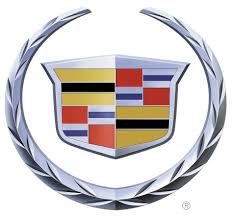SRX RWD V8-4.6L VIN A (2006)

Cruise Control: Description and Operation
CRUISE CONTROL DESCRIPTION AND OPERATION
Cruise control is a speed control system that maintains a desired vehicle speed under normal driving conditions at speeds above 40 km/h (25 mph).
Steep grades may cause variations in the selected vehicle speeds.
The following are the main components of the cruise control system:
-
The accelerator pedal
-
The brake pedal position sensor
-
The electronic brake control module (EBCM)
-
The On/Off switch
-
The engine control module (ECM)
-
The resume/increase switch
-
The set/decrease switch
-
The throttle actuator control (TAC) motor
-
The vehicle speed sensor
Cruise Control Engaged
The cruise control system will engage and adjust vehicle speeds, based on the activation of the following cruise control switches:
-
On/Off
-
Resume/Increase
-
Set/Decrease
The cruise control switches are located on the multifunction/turn signal lever.
The engine control module (ECM) monitors the signal circuit of the cruise control switches. The ECM uses the cruise control set/coast and
resume/accelerate switch signal circuit in order to determine when to capture and maintain the vehicle speed. The ECM monitors the vehicle speed
signal circuit in order to determine the desired vehicle speed. The ECM uses the TAC motor in order to maintain the vehicle speed. For further review
of the TAC system, refer to Throttle Actuator Control (TAC) System Description in Computers and Control Systems - 3.6L (LY7) or to Throttle
Actuator Control (TAC) System Description in Computers and Control Systems - 4.6L (LH2).
Ignition voltage is supplied from the 10-ampere STRG CTLS fuse to the cruise control switch via the ignition 1 voltage signal circuit. The cruise
control function switches are arranged in a resistive ladder design, with each cruise control function switch having a different resistance value. The
ECM detects a specific voltage value that is associated with the cruise control function switch being activated. When the normally open cruise control
On/Off switch is turned ON, the switch closes and the ECM detects a predetermined voltage signal on the cruise control cruise control set/coast and
resume/accel switch signal circuit indicating that the On/Off switch is active. Similarly, when the resume/increase switch or the set/decrease switch are
activated, the ECM detects the predetermined voltage signal on the cruise control set/coast and resume/accel switch signal circuit. To engage the
cruise control system, turn the cruise control system ON by activating the cruise On/Off button ON and momentarily activating the set/decrease
switch. The ECM will engage the cruise control system and record the vehicle speed. The ECM sends a class 2 message to the instrument panel cluster
(IPC) in order to activate the cruise control indicator. The set/decrease switch or the resume/increase switch will remain inactive when the ECM has
not received the predetermined voltage signal from the On/Off switch. Pressing the accelerator pedal, while the cruise control system is engaged, will
allow the driver to override the cruise control system in order to accelerate the vehicle beyond the current set vehicle speed. When the accelerator
pedal is released, the vehicle will decelerate and resume the current set vehicle speed. The driver can override the current set vehicle speed via the
set/decrease switch and the resume/increase switch. When the cruise control system is engaged, activating and holding the set/decrease switch will
allow the vehicle to decelerate from the current set vehicle speed without deactivating the cruise control system. When the set/decrease switch is
released, the vehicle will maintain the current vehicle speed. When the cruise control system is engaged, momentarily activating the set/decrease
switch will activate the cruise control tap down function. The tap down function will allow the vehicle to decelerate at 1.6 km/h (1 mph) increments
for each time that the set/decrease switch is activated. The minimum vehicle speed for the tap down function is 37 km/h (23 mph).Activating and
holding the Resume/Increase switch, when the cruise control system is engaged, will allow the vehicle to accelerate to a greater vehicle speed than the
current set vehicle speed. When the resume/increase switch is released, the vehicle will maintain the current vehicle speed. When the cruise control
system is engaged, momentarily activating the resume/increase switch will activate the cruise control tap up function. The tap up function will allow
the vehicle to accelerate at 1.6 km/h (1 mph) increments for each time that the resume/increase switch is pressed. The tap up function will only
accelerate the vehicle a total of 16 km/h (10 mph) over the current set vehicle speed. Momentarily activating the resume/increase switch will recall
the previous set vehicle speed, after the cruise control system is disengaged by pressing the brake pedal.
Cruise Control Disengaged
The ECM disengages the cruise control operation based on the signals from one of the following:
-
The brake pedal position sensor
-
The On/Off switch
The brake pedal position sensor is mounted on the brake pedal bracket. Pressing the brake pedal while the cruise control is engaged will disengage the
cruise control system. The EBCM monitors the brake pedal position sensor. When the brake pedal is pressed, the EBCM sends a class 2 message to
the ECM indicating that the status of the brake pedal position sensor. The ECM also detects a high voltage signal on the stop lamp switch signal
circuit from the EBCM. For further information on the brake pedal position sensor, refer to Exterior Lighting Systems Description and Operation in
